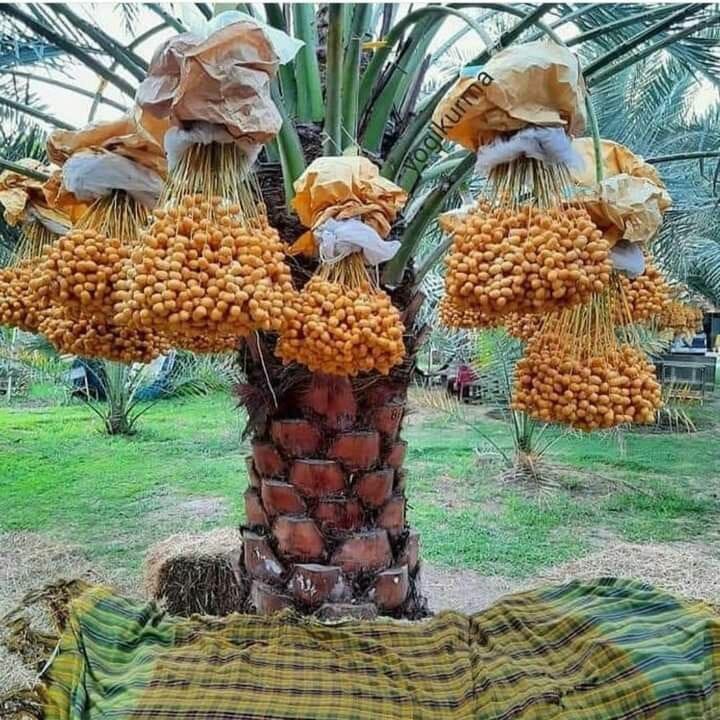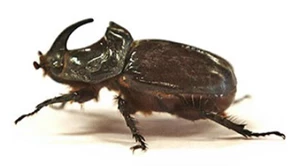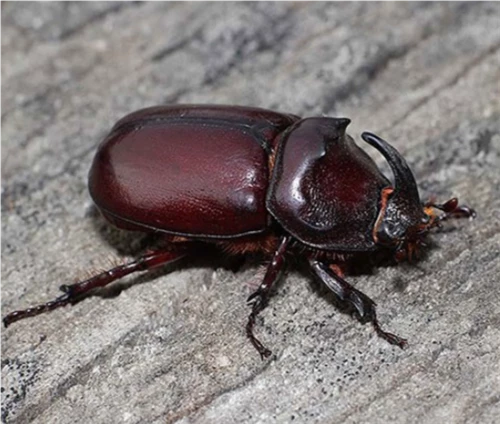
The rhinoceros or horned beetle is a specific and damaging pest of date palms. This pest is widespread in all date-producing provinces of Iran. Unfortunately, in recent years, its population has significantly increased due to reduced rainfall, drought, and increased soil and water salinity.
Damage Caused by the Pest
The primary damage caused by this pest is due to the larvae, which are wood-borers. The larvae remain hidden inside the tree for extended periods, allowing ample time to feed and gradually destroy the trees. They feed on the meristematic or soft tissues at the base of petioles and inside the trunk below the crown. Over several years, this results in hollowing out of the trunk’s interior, leaving powdery or sawdust-like material formed from larval feeding and excrement. Eventually, the tree weakens, leading to sudden breakage and complete loss of the tree and its yield under minor mechanical stress.
Adult beetles also cause damage by feeding on green and living parts of the tree, particularly young leaves, the base of fruit stalks, and unopened spathes. They create tunnel-like holes in plant tissues, often leaving sawdust at the feeding sites.
Morphology and Biology
- Adult Insects: The adult beetles are robust, strong-bodied insects, about 3–4 cm in length and 1 cm in height, with a metallic dark brown color. They have a curved horn-like structure on the front of their head, resembling a rhinoceros. This horn is shorter in females and longer, more prominent, and backward-curving in males.
- Eggs: Adult females lay up to 25 round, bright eggs, about 1 mm in diameter, usually individually.
- Larvae: The larvae are white, curved, with dark brown heads. Late-stage larvae are larger and consume more plant material. At the end of the larval stage, they pupate in a cocoon or “pupal cradle” made of wood and sawdust. These brown, sturdy cocoons are the size of the adult insect.
- Pupae and Adults: After pupation, adult insects emerge from the cocoons and exit through tunnels between the bases of petioles, inside the trunk, or possibly the crown.

Biology
In Bushehr Province, the pest overwinters mainly as larvae and occasionally as adult beetles. Overwintering larvae begin pupating in early spring, and adult emergence occurs from early July to early September. After a brief period of feeding, adult females lay eggs in the fibers at the base of petioles.
Pest Management
- Mechanical Management and Sanitation:
- Maintain orchard hygiene, including the removal and burning of plant residues and weeds.
- Use mechanical traps, pheromone traps, and bait traps.
- Regularly eliminate leftover plant materials such as dried fronds and infested debris.
- Chemical Control:
- Use poisoned baits and apply plastic wrapping around the trunk.
- Place aluminum phosphide tablets in larval tunnels.
- Use suitable systemic and penetrative insecticides for effective control.
